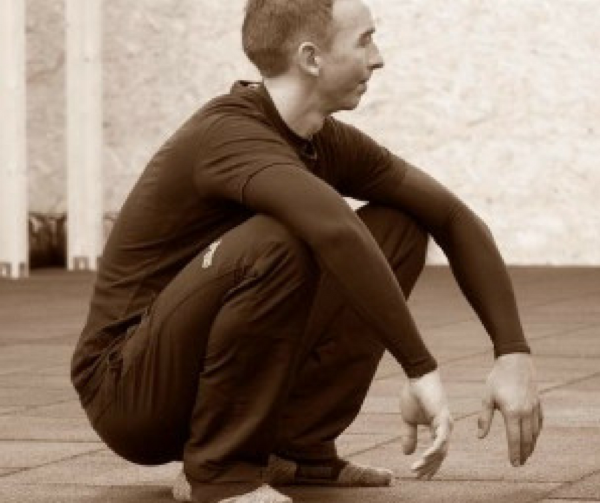 [wpseo_address show_state=”1″ show_country=”1″ show_phone=”1″ show_phone_2=”0″ show_fax=”0″ show_email=”1″ show_logo=”0″]
[wpseo_address show_state=”1″ show_country=”1″ show_phone=”1″ show_phone_2=”0″ show_fax=”0″ show_email=”1″ show_logo=”0″]
What sort of shoe should you squat in? Does it matter? I’m going to run you through these common questions so by the end of the article you have a clear understanding of pros and cons of wearing different shoes.
The majority of our members turn up in ‘trainers’. These are typically made to be light and with a large foamy sole to ‘cushion’ impact. Wearing of these in general is another whole blog article, but in terms of squatting I am going to start off with a blanket statement by saying they are not ideal.
The problem with a ‘trainer’
Trainer type shoes are not ideal for a couple of reasons. The first reason being a very large percentage (I would guess 80%) of new members are found to be lacking in ankle range as we assess their knee to wall test in the initial consult. There is admittingly some bias to this test with respect to different limb length but it gives us a great starting point. With limited dorsi flexion (the ability of the knee to travel forward whilst keeping heel down) it is almost impossible to have a natural squat that is not completely hip dominant (placing no stress on the knee extensors). Often what happens with a ‘soft’ shoe like a trainer the trainee will collapse in at the ankle under load. Secondly, the soft sole disperses much of your force you have generated. We really want all of that force to be straight into the ground. If you think the extreme version of ‘soft’ think about standing on a big piece of thick foam and thinking how well you could squat. Not great right?
Factors affecting the shoe you should wear
So if you shouldn’t wear the typical sports shoe what should you wear? This depends on a number of factors:
- How much ankle range do you have? Does having more make your squat look and feel better? Remember the more range you have at the ankle, the more knees can travel forward, the more upright your torso and therefore the more emphasis on your quadriceps and the less on your back.
- What is your main training game? Are you a Weightlifter, a Crossfitter, a Powerlifter or just someone that enjoys getting stronger?
- Do you have any injuries you need to work around?
If you are a weightlifter your primary goal is to lift as much weight as you can in the clean and jerk and the snatch. The more upright you can receive the bar in these lifts the higher chance you have of making the lift. In this scenario you would definitely be going with a traditional weight lifting shoe. This has a very hard sole and also a raised heel which is going to let the knees travel forward more (hence keeping you more upright). Easy to obtain examples would be the Nike Romaleos and the Adidas Adipower.
If you train Crossfit or a similar type of training that involves heavy lifts but also a large range of other movements a shoe that still has a very firm sole with minimal rise will work best. Reebok have the standard ‘Nano’ whilst Nike have the ‘Metcon’ and many others have a comparative shoe now.
If you are a Powerlifter you are only concerned with lifting the most weight you can on the squat and not whether you are more upright or not. A firm shoe (Converse Chuck is a standard powerlifting shoe) will do the job nicely.
If you are just looking to get stronger and don’t compete in any way then it really comes down to your goal with your squat and what it currently looks like. Once again if you struggle to get good depth with your squat and your ankle range on a knee to wall test is less than 12cm than you can most likely benefit from a weightlifting shoe. If you are not sure still if lack of ankle range is your problem, refer to our last article here to run through a checklist. Although more expensive than a trainer type shoe they can literally last you 10 years if you treat them right. (I have had the ones in the picture for about 6 years and have worn them at least a few times per week since then).
Happy Lifting. Any Questions? Please feel free to comment or email us luke@thewildmovement.com.au



